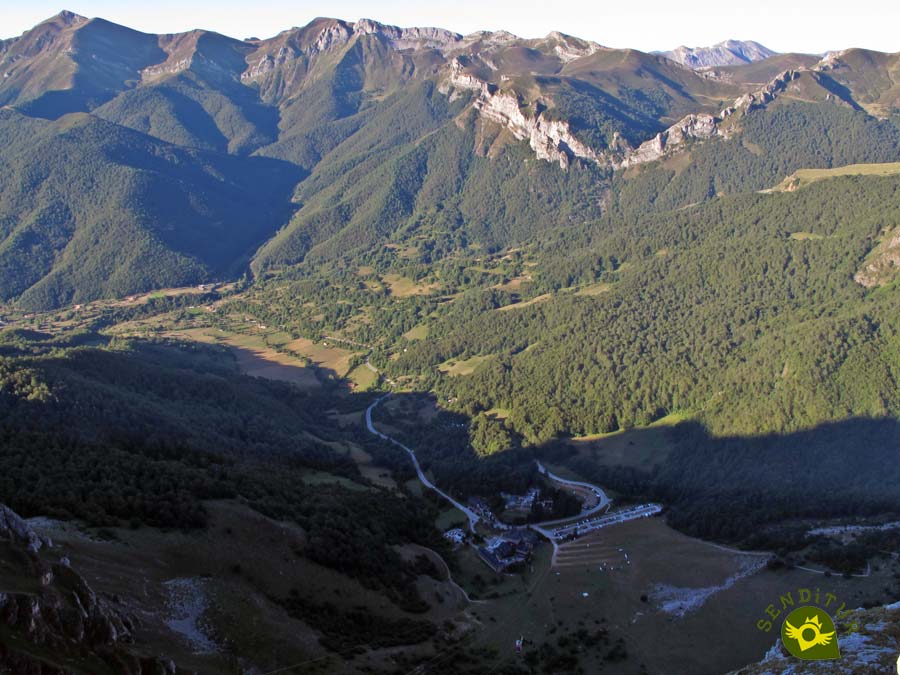Cable Car of Fuente Dé
From civilization to the mountains of the central massif of the Picos de Europa
From civilization to the mountains of the central massif of the Picos de Europa
It is located in the town that gives it its name and that belongs to the municipality of Camaleño in the region of Liebana, in the extreme southeast of the National Park of the Picos de Europa. From the glacial circus, full of beech trees and in which the river Deva is born, and surrounded by a semicircle of mountains, in a few minutes the Cable Car of Fuente Dé elevates the visitor to a height of 1850 m saving an unevenness of 750 m while it offers, in its route, vertiginous and spectacular views.

In the Cable, as the top station of the cable car is known, there is a viewpoint, known as the Viewpoint of El Cable, which invites, especially people without vertigo, to enjoy the beautiful contrast between the greenery of the valley and the beech forests and the impressive limestone massifs of the Picos de Europa, which from here are seen so close. The history of the Cable Car of Fuente Dé begins when José Antonio Odriozola, who was president of the Spanish Mountaineering Federation between 1971 and 1981, with the precedent of the existence of a cable where the minerals extracted in the mines were lowered, from Lloroza to Fuente Dé already at the beginning of the 20th century, proposed to install a cable car that would bring lovers of nature and mountaineering closer to such an emblematic massif of the National Park of the Picos de Europa.

After studying its viability, the project was approved and, with the work of the two engineers of roads, canals and ports and an architect in unison, construction began at the end of 1962. Although the official inauguration took place on September 12, 1966, the cable car had already been in operation a month earlier. In the beginning, seven passengers could travel in the cabins of the cable car, then were expanded to accommodate fourteen people and since 1990 the passengers they could carry were twenty-eight. The last renovation of the cable car's entire operating system took place at the beginning of year 2015.

The Cable Car of Fuente Dé is of the bicable or sway type, it has three cables for each cabin, with a length of 1450 m. One is the rail, which is a very special closed cable, another the tractor cable for the movement of the cab and a third cable is the rescue cable for the cabins in case of accident or breakdown. Today's fully glazed cabins provide an almost 360º perspective of an impressive panoramic view. From Fuente Dé there are several hiking routes that undoubtedly delight those who visit the area, but this enclave must also be visited from and above, as the great tourist attraction is this cable car, the third longest in the world and the longest in Europe with a single section, offers the opportunity to mountaineers, climbers, cyclists, hikers and families, each according to their hobbies, abilities and aptitudes, to tread summits, climb vertical walls or walk along its innumerable paths and tracks that cross this National Park of Picos de Europa show places of an almost magical beauty.

It is very typical to find yourself in Fuente Dé with fog or dense clouds between which the cable car cabin dives to resurface then, a few meters above, in front of a radiant sun whose light reflects the walls of the steep mountains of this area of Picos de Europa.
So many were the occasions that King Alfonso XIII came to the area, taking advantage of his holidays, that the Royal Asturian Mining Company built for the monarch, in the vicinity of the river Salado and Peña Vieja, at an altitude of 1700 meters, a house known as the Chalé Real.


Sometimes the term cable car and funicular is used interchangeably but they are two different means of transport, cable car is the one in which the vehicles are suspended from one or more cables, and the funicular is the vehicle that moves on a track placed on the ground or supported by fixed works and pulled by several cables.
MORE ROUTES AVAILABLE, DON'T MISS IT...
MORE PLACES AVAILABLE, DON'T MISS IT...
To get to Fuente Dé you have to take the CA-185 road that leaves from Potes and after passing through Espinama ends at Fuente Dé.
Upon arrival we will have ample parking areas where we can park our vehicle to go to the building that houses the box office. Once with our ticket we will only have to approach the lower terminal of the Cable Car of Fuente Dé to undertake the ascent towards the upper terminal or El Cable.
SENDITUR is not responsible for any variation in the information described, as well as for the misuse of its guides and recommends that everyone be responsible and prudent in carrying out the activity. Likewise, we invite you to document yourself with books and specialized guides to complement the information described. From the commitment of SENDITUR with Nature and the respect to the balance of the environment, SENDITUR urges you to travel in a responsible way, with low environmental impact and respecting at all times the Natural, Cultural and Social environment wherever you go. For any suggestion, SENDITUR invites you to send an email to
Continue watching …